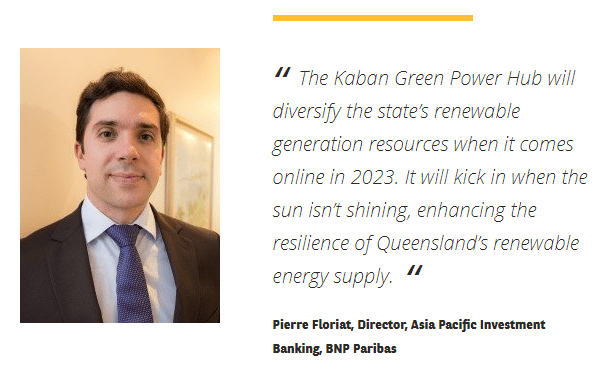Neoen’s 157 MW Kaban Green Power Hub will bring wind power to northeast Australia and accelerate the transformation of Queensland’s energy grid.
Queensland, dubbed Australia’s Sunshine State, has embraced its potential for solar energy generation with more than 760,000 small-scale solar installations: the highest solar penetration in the country[1]. Solar power is critical to the state government reaching its target of generating 50% of energy from renewable sources by 2030, but solar alone can’t fulfil this requirement. As weather variations are unpredictable, a diversified renewable energy mix is required to keep power flowing when sunlight is in short supply.
To achieve this, the state government plans to build three Renewable Energy Zones (REZs) to reshape Queensland’s energy mix. The Kaban Green Power Hub in Far North Queensland will be the cornerstone of one of these: the Northern Queensland REZ.
The Kaban project comprises a 157-megawatt wind turbine installation, to be built by leading renewable energy producer Neoen. The 28 turbines, manufactured by Vestas, will be the country’s largest, each with a capacity of 5.6 MW. Neoen and Powerlink Queensland are partnering to upgrade the line between Cairns and Townsville which will substantially improve the network’s capability, unlocking up to 500 MW of additional capacity for future projects.
“The Kaban hub is the core component of the Northern Queensland REZ – the first in Queensland,” said Pierre Floriat, Director, Asia Pacific Investment Banking, BNP Paribas. “Adding new capacity to the grid takes more than building the generation facility – generation is part of a value chain which includes storage and distribution, both of which are integrated into the Kaban project’s design. Augmenting the network will accommodate the added power, while a future battery element can add storage capacity.”
Renewable power that works
Adding wind to the mix is important in a state more familiar with solar generation, and brings additional benefits for Far North Queensland. BNP Paribas was one of five Mandated Lead Arrangers (MLA) for the AUD370 million project financing. The loan’s proceeds are 100% dedicated to the construction of the facility.

The lenders took into account a capacity purchase agreement (CPA) with government-owned electricity generation and trading company CleanCo Queensland, which provides visibility into project revenues for 15 years.
“The banks took a view that income from the new facility is predictable thanks to the CPA,” said Floriat. “Fifteen years is longer than most offtake arrangements these days, underlining CleanCo’s commitment to energy transition and driving regional growth and jobs.”
The participation of key state utilities underscores the importance of the project to the broader network in North Queensland, complementing the addition of solar capacity in the state and driving the local economy. Queensland has committed $2bn to renewable energy jobs as part of its Covid-19 Economic Recovery Plan.
“Neoen and CleanCo have partnered together before, which gives us confidence, as does the partnership with Powerlink,” said Floriat. “The banks also factored in the asset life of the facility and the high quality of the Vestas turbines, which represent a strong long-term proposition.”
Australia is French renewables developer Neoen’s largest market, accounting for around 40% of its business. “Neoen was among the first overseas developers to bring their global renewables perspective to Australia; they led the way for a lot of other offshore players into the country, which now has a very active renewables development scene,” said Floriat.
Talking to the local market
“Financing a holistic development like the Kaban hub takes a team that understands and talks to the local market it banks – BNP Paribas is able to support overseas clients’ ventures in various parts of the world,” said Floriat.
In Australia, BNP Paribas has financed energy transition projects including connectivity providers, smart meters and battery storage: the bank last year signed a green loan supporting Queensland’s Wandoan South battery project.
“Generation is just one piece of the picture,” said Floriat. “It takes an integrated value chain for renewable energy to be integrated into the grid in a way that adds maximum value.”
This kind of holistic approach is essential to making the transition to renewable energy workable, and this includes the outlook of the banks financing the process.
BNP Paribas has doubled its financing of renewable energy projects in four years and set a global goal of €18 bn by the end of 2021.

